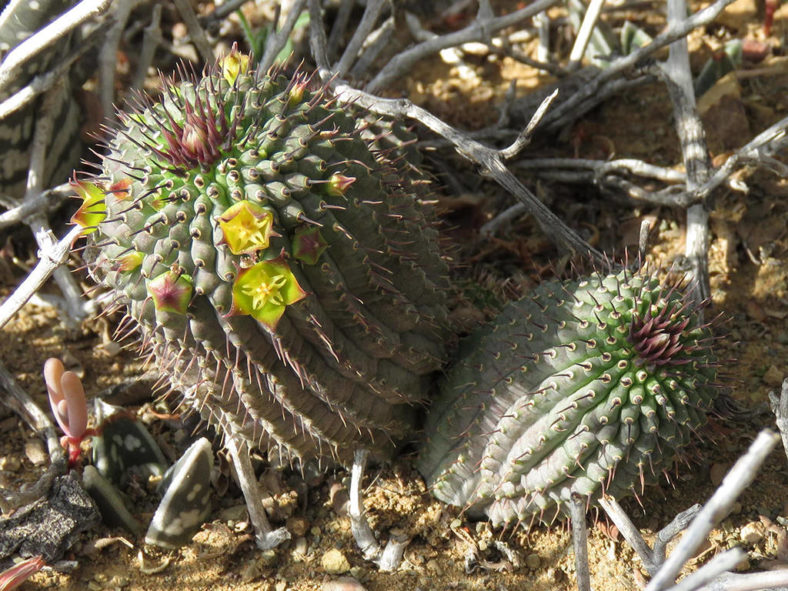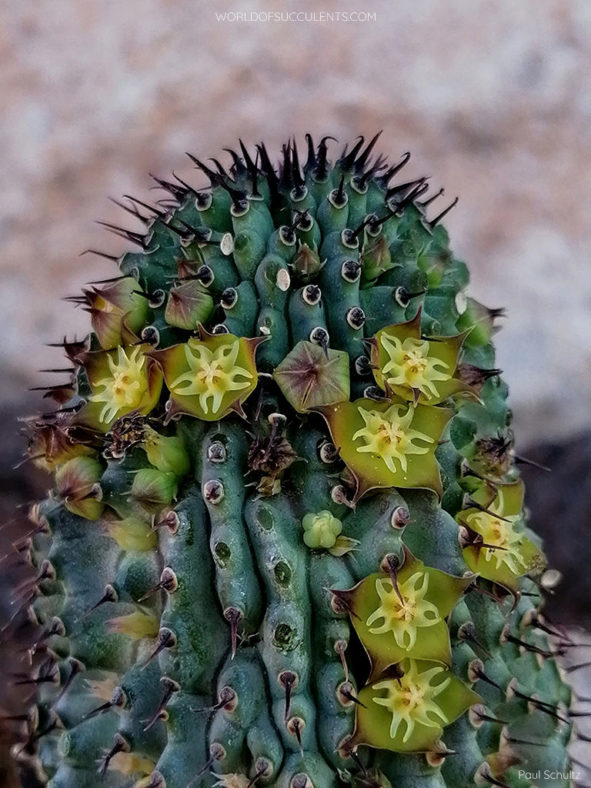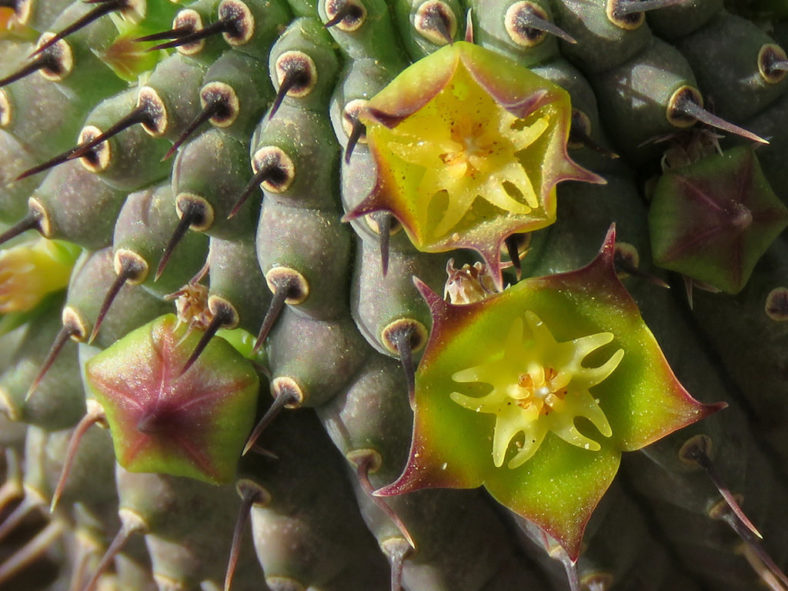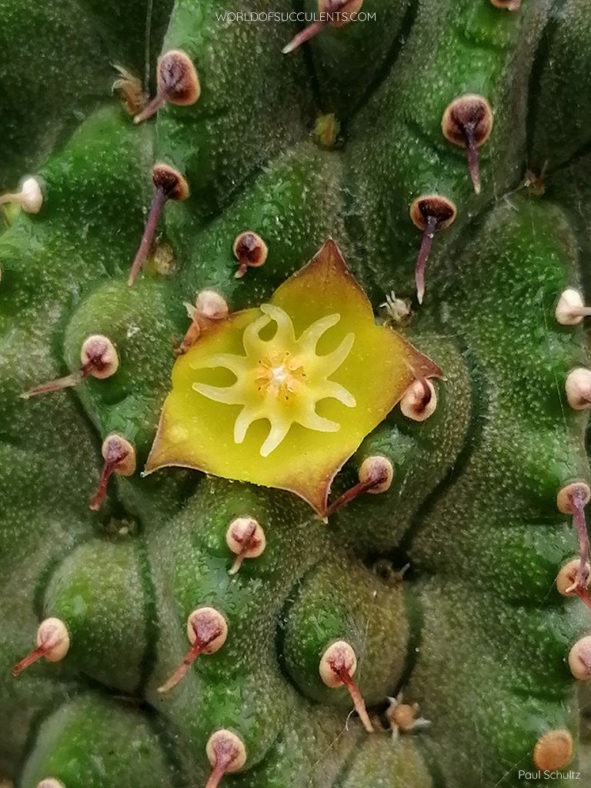Scientific Name
Hoodia flava (N.E.Br.) Plowes
Common Name(s)
Yellow-flowered Ghaap
Synonym(s)
Ceropegia flavanthera, Trichocaulon flavum, Trichocaulon karasmontanum
Scientific Classification
Family: Apocynaceae
Subfamily: Asclepiadoideae
Tribe: Ceropegieae
Genus: Hoodia
Etymology
The specific epithet "flava (FLA-vuh)" means "yellow, golden" and refers to the color of the flowers.
Origin
The native range of Hoodia flava is from the Great Karas Mountains in southern Namibia to Prince Albert in the Western Cape province of South Africa. It grows on flat, stony to loamy ground, under small karroid bushes.
Description
Hoodia flava is a leafless succulent with erect, cylindrical, greyish to brownish-green stems with tubercles fused below the middle into 18 to 31 sharp angles, each tipped with a weak, pale to dark brown spine. The stems can grow up to 12 inches (30 cm) tall and 2.8 inches (7 cm) in diameter, but they are usually much smaller, and all arise from the base. The spines can measure up to 0.25 inches (0.6 cm) long.
The flowers are five-lobed and appear solitary or in clusters of up to 3 in the upper half of the stems in winter. The corolla is finely papillate, inside greenish-yellow, sometimes with brown tips to lobes or wholly brown, and can reach up to 0.6 inches (1.5 cm) in diameter. The corona is slightly translucent yellow, occasionally faintly brownish translucent, with spreading outer lobes bifid below the middle into linear lobules. It can reach up to 0.25 inches (0.6 cm) in diameter. The fruits are paired follicles with numerous seeds strongly compressed and with an apical coma and can grow up to 7.2 inches (18 cm) long.

How to Grow and Care for Hoodia flava
Light: H. flava grows best in full sun or partial shade. It will benefit from light shade during the hottest summer days. Indoors, place the plant near the brightest window in your home. It will stretch if it does not have enough sunlight. Avoid abruptly moving plants adapted to lower light levels to full sun to prevent sunburn.
Soil: Use commercial potting soil mix for succulents or prepare your own with 50 to 70 % mineral grit, such as coarse sand, pumice, or perlite.
Temperature: This plant thrives in warm outdoor environments with low to moderate humidity. It does not like winter cold and should remain fairly dry and warm during its winter dormancy. H. flava can withstand temperatures as low as 35 °F (1.7 °C). USDA Plant Hardiness Zones 10b to 11b, 35 to 50 °F (1.7 to 10 °C).
Watering: H. flava has typical watering needs for a succulent. Water your plant thoroughly during the growing season, from spring to fall, and allow the soil to dry between waterings. Do not water in winter. The plant goes dormant in winter and needs almost no water, about once a month.
Fertilizing: To keep your plant healthy and thriving, fertilizing is a good idea. Feed with water-soluble fertilizer diluted to half the recommended strength only when the plant is actively growing.
Repotting: Repot your plant in spring just before the growing season. H. flava has shallow roots and does not require too much soil to grow. Pick a container with drainage holes.
Propagation: The best way to propagate this succulent is by stem cuttings. Take cuttings during the season to ensure good rooting. H. flava is also easy to grow from seeds. Sow the seeds in spring.
Learn more at How to Grow and Care for Stapeliads.
Toxicity of Hoodia flava
H. flava has no toxic effects reported. It is safe around pets and humans.
Links
- Back to genus Hoodia
- Succupedia: Browse succulents by Scientific Name, Common Name, Genus, Family, USDA Hardiness Zone, Origin, or cacti by Genus
Photo Gallery
Click on a photo to see a larger version.


